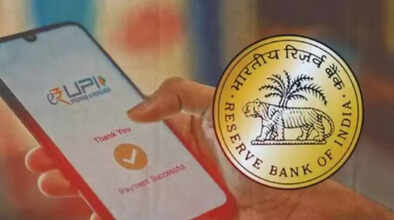RBI New Rule: People will now get relief from online fraud, RBI will implement this important rule from April 1, 2026.

RBI’s New Rule from April 1, 2026: Mandatory Two-Factor Authentication to Curb Online Payment Frauds
New Delhi, Oct 1, 2025 – The Reserve Bank of India (RBI) has announced a landmark regulation aimed at tightening digital payment security and reducing the rising incidents of online fraud. Starting April 1, 2026, all digital transactions in India will require mandatory two-factor authentication (2FA), adding an additional layer of protection for consumers.
What the New Rule Means for Users
Under the new guidelines, two-factor authentication will no longer be optional—it will be compulsory for every online transaction. This means users will need to verify payments not just through the traditional SMS OTP (One-Time Password), but also via additional security methods such as:
-
PIN or password
-
Software tokens
-
Biometric authentication (fingerprint or face scan)
-
Device-based security credentials
The RBI has emphasized that at least one of these methods must be transaction-specific and unique every time, ensuring that fraudulent attempts are minimized.
Smarter Risk-Based Authentication
Apart from 2FA, RBI is introducing risk-based checks powered by advanced behavioral and contextual analysis. For instance, if a transaction appears suspicious—say, a sudden large payment from an unusual device or location—the bank or payment provider may request additional verification. This could include biometric scans or token-based confirmations.
This adaptive system aims to identify fraudulent activity in real time while ensuring smooth transactions for genuine users.
Extra Protection for Cross-Border Payments
The RBI has also focused on Card-Not-Present (CNP) transactions, such as cross-border online payments, which are more prone to fraud. Banks and payment institutions will now be required to apply stricter, risk-based controls on such transactions, aligning India’s digital payment framework with global security standards.
This move will not only protect Indian consumers but also enhance the credibility of India’s fast-growing digital payment ecosystem on the international stage.
Why This Move Was Needed
India has witnessed a surge in digital fraud cases in recent years, with scammers exploiting loopholes in online payment systems. With the rapid adoption of UPI, digital wallets, and online shopping, cybercriminals have found more opportunities to target unsuspecting consumers.
By mandating two-factor authentication, RBI is providing consumers with a robust safety net, making it significantly harder for fraudsters to bypass security systems.
What It Means for Consumers and Businesses
For everyday users, the new rule means safer transactions and more confidence while shopping or transferring money online. While it may add one extra step to the payment process, the added protection ensures that consumers’ hard-earned money is secure.
For banks and payment service providers, the guidelines mean an urgent need to upgrade infrastructure to meet higher security standards. This includes updating mobile banking apps, integrating biometric systems, and ensuring compliance with RBI’s framework.
A Big Push Towards Digital India
The RBI’s regulation is expected to make digital transactions in India more secure, faster, and reliable. By strengthening trust in online payments, it supports the country’s broader push toward a cashless economy and the government’s Digital India initiative.
Experts believe that this move will also encourage more people, especially in rural and semi-urban areas, to adopt digital payments without fear of fraud. With stronger safeguards in place, digital commerce is set to grow even further, boosting India’s fintech landscape.
Conclusion
The RBI’s new rule marks a major milestone in India’s digital financial journey. From April 1, 2026, every online transaction will be shielded by two-factor authentication, making digital payments not only convenient but also secure. By reducing the risks of cybercrime and fraud, the central bank is ensuring that consumers can embrace digital payments with confidence, paving the way for a safer and stronger digital economy.

